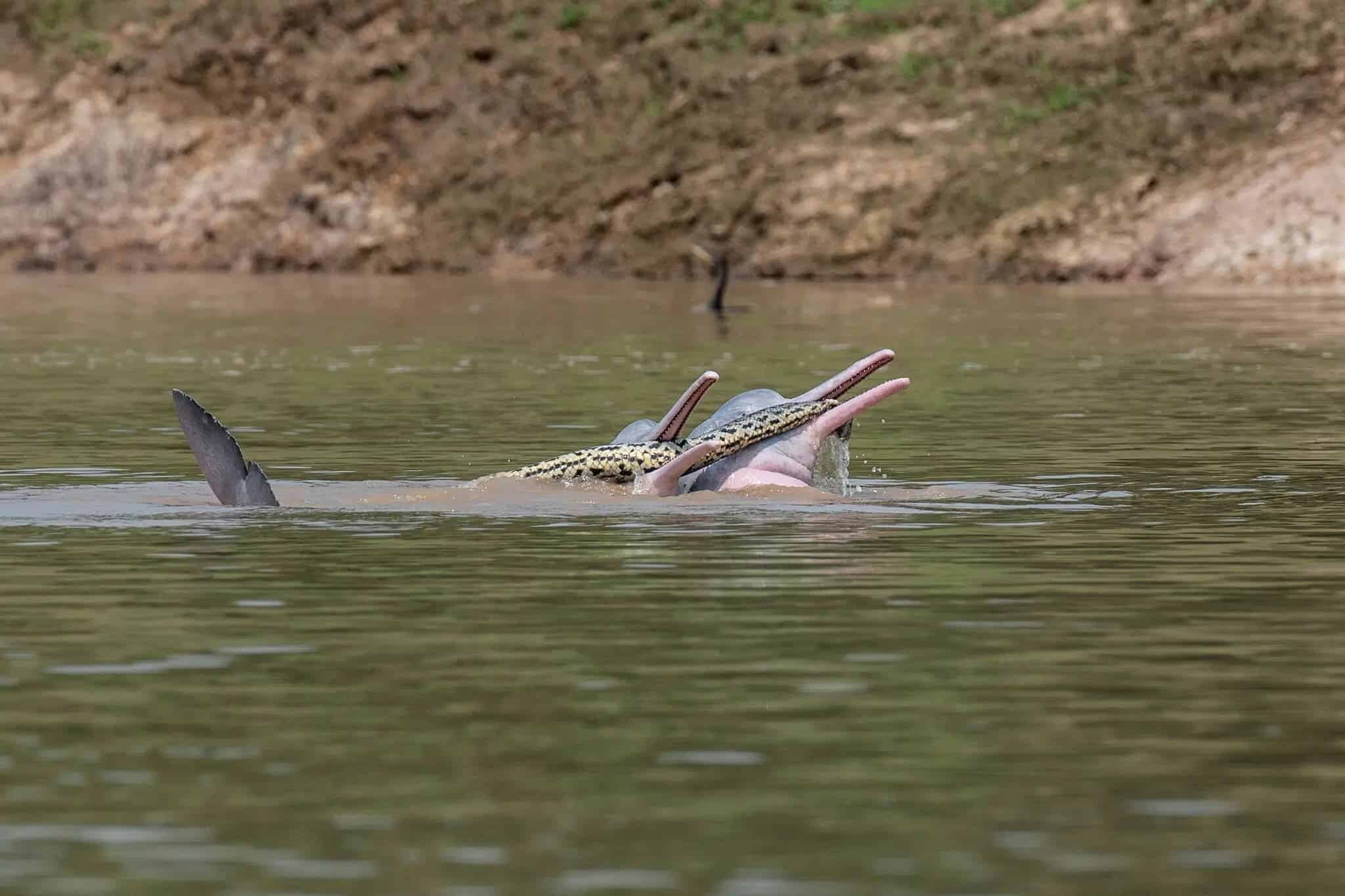Although they are commonly associated with the oceans, some dolphin species can actually be found swimming in several major rivers in South America and Asia.
The Bolivian river dolphin (Inia geoffrensis boliviensis), one of the few such species, is pretty elusive. Biologists are particularly interested in them because their populations serve as indicators for the overall health of the basins where they live, but usually they can only spot their fins or tails.
Imagine the excitement of biologists from the Noel Kempff Mercado Museum of Natural History during one seemingly uneventful day in August 2021. That day they saw not one, but two Bolivian river dolphins with their heads above the river. But that was really nothing compared to what they noticed next.

Taking out their cameras to snap some quick pictures of this extraordinarily rare sighting, the researchers could now see that the two dolphins were holding an anaconda in their beaks, handling it like it was a plush toy.
This was absolutely shocking to the members of the teams. It’s safe to say something like this had never been witnessed, or at least this is the first time it was documented.
Bolivia’s Beni anacondas are apex predators, meaning no one messes with them in their ecosystem. Apart from a single case of cannibalism, no one had ever seen Bolivian anacondas getting killed or eaten by any other wild animal.
But why were the dolphins doing this? That’s the million-dollar question that scientists can’t yet seem to answer definitively.
The Bolivian river dolphin is one of four freshwater river dolphins, locally known as bufeos, swimming in South America. They can grow up to 2.8 meters (9 feet) long and have many teeth that they use to munch on fish and crabs. However, snakes are not part of their typical diet.
Writing in the journal Ecology, Omar Entiauspe-Neto and colleagues believe the likeliest explanation for this bizarre event is play at the snake’s expense. For both oceanic and river dolphins, play is a critical aspect of their lives, which provides opportunities for calves to practice and perfect locomotive skills, including those involved in foraging and mating.
The snake probably had much less fun than the frolicking dolphins. Beni anacondas are semi-aquatic creatures that can hold their breath underwater for extended, albeit limited periods of time. Some of the six Bolivian river dolphins counted by the researchers at Tijamuchi River during this event held and submerged the anaconda underwater for at least seven minutes, likely killing the snake.
There were also some dolphin juveniles witnessing the scene, which introduces another possibility: the snake handling was meant to be instructional. However, the juveniles could have just been curious all the same.
Another wild although not entirely implausible explanation is that the dolphins felt a bit frisky. Dolphins are some of the most sexually active and sexually aggressive animals on the face of the Earth. They will just stick it wherever it fits.
Scientists have previously observed a male bottlenose dolphin wrap a live wriggling eel around its penis. Another male was seen attempting to penetrate the blowhole of a pilot whale in an aquarium.
Since the photos of the dolphins showed they had erected penises, it’s possible the exciting experience of handling a huge snake with their beaks may have been sexually stimulating for them. The sensation of rubbing against the snake may have also been sexually enthralling for the dolphins. It may even have been possible that the male dolphins tried to penetrate the snake — that wouldn’t have been surprising.
We know much more about ocean dolphins than their river-dwelling counterparts, partly because the latter are more elusive and the waters they swim in are murky. But as these new findings show, the extra effort is worth it as there is still much to learn about them.
Was this helpful?